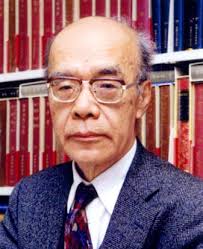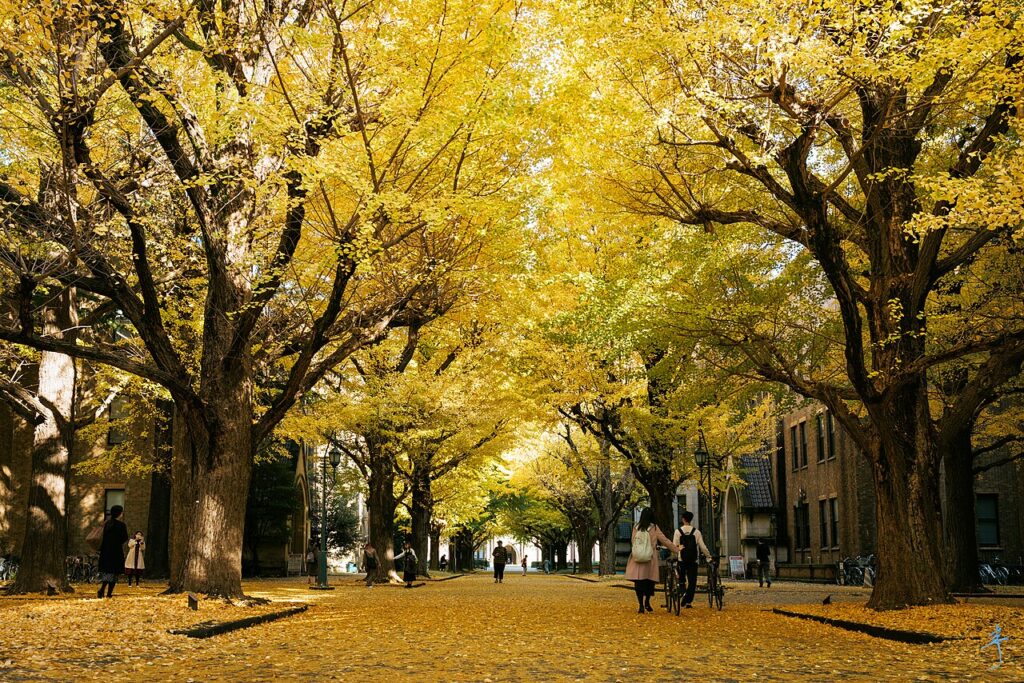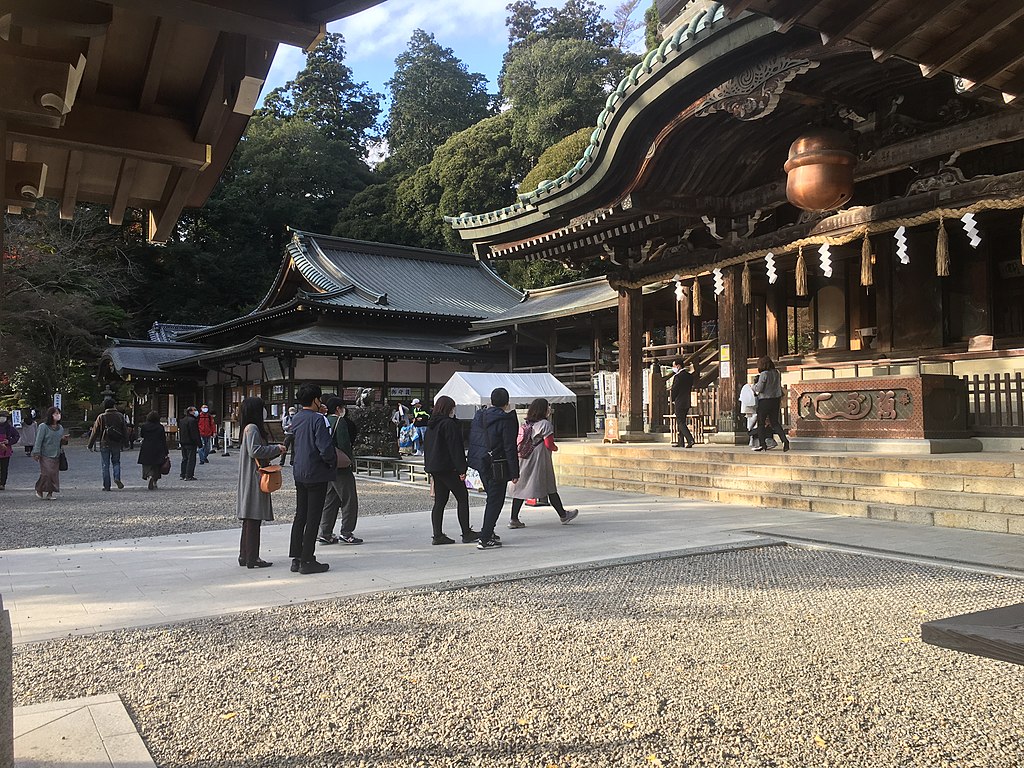
As Watsuji Tetsuro’s best known disciple, Yasua Yasuo has been described by Thomas Kasulis as “one of the most provocative and far-reaching” among Japan’s 20th century philosophers. “His work critiques in a fruitful way the foundational ideas in Asian and Western philosophy, science, medicine, and the study of religion. He not only shows how ideas are culturally embedded, but also suggests how we can work across those cultural lines to make our theories more universal and more efficacious.” Yuasa studied with Nishida Kitaro and Tanabe Hajime, in addition to Watsuji, whom he met early in life. As a yoga and qigong practitioner, he is best known for his study of the body as the vehicle for the training of the mind in self-cultivation, and has written extensively on the role of ki-energy in the Asian wisdom tradition, but he has also engaged with a number of Western philosophers, among whom Maurice Merleau-Ponty, Henri Bergson, William James, Carl Jung and Sigmund Freud in order to “offer an Eastern view of human nature” in terms familiar to a Western audience.
In Science and Comparative Philosophy: Introducing Yuasa Yasuo, David Shaner and Shigenori Nagatomo provide us with a detailed biography of Yuasa, which I will use in this text.
“Yuasa Yasuo was born on June 5, 1925 in Fukuoka-city, the major city of the island of Kyushu, located in southern Japan. Immediately after his birth, his family moved to Tokyo, where Yuasa’s father worked as a newspaper reporter for the Asahi (one of the most influential dailypapers in Japan), in the department of Arts and Literature. Yuasa’s father was a graduate of Waseda University.” He was not, however, a mere intellectual working for a reputed newspaper. We are told that “Yuasa’s father was attracted to ‘mysticism’ because he himself was endowed with paranormal ‘healing’ and ‘clairvoyant’ abilities.” This interest in mysticism led him to eventually resign from the Asahi to join a religious organisation in Osaka. There, Yuasa, still an elementary school pupil at the time, “witnessed many performances of psychic healings and wondered how such mysterious performances could be at all possible. These childhood experiences became the object of Yuasa’s later theoretical investigations into para-psychological phenomena.”
In Japan’s already volatile situation, the government ordered the dissolution of the religious organisation to which his father belonged. As he “was an executive officer, he was arrested, tortured by Special Police, and soon imprisoned for two years for ‘contempt’ of the government. Although Yuasa’s father was released from the prison, his ‘crime’ was not pardoned until the end of World War II. The incident cast a dark and grave shadow over Yuasa’s personality in his formative years. Since he was alienated from society, he became introverted and shy, confining all of his feelings to himself.” My source also adds: “The struggle to reconcile the internal and external worlds became a leitmotif of [Yuasa’s] mature years. His efforts to bridge the gap between the polarities of the inner and external world later became extended to include reconciling the polarities between the East and the West.”

In 1940, just before Japan’s entry into World War II, Yuasa’s family moved back to Tokyo where, upon completing junior high school in 1945, he joined the prestigious Tokyo Imperial University with the intention of studying Japanese history. During his very first semester there, Yuasa, however, was drafted to serve the country. Teaching came to a stop until the fall of that year, after Japan’s surrender. It is upon the reopening of classes that Yuasa attended his first ethics class taught by Watsuji Tetsuro, who later became Yuasa’s academic mentor.
In fact, the collapse of Japan’s government and occupation of the country by US forces, triggered “the political collapse of the department of history in which almost all the professors either resigned or were expelled as a result of their controversial views of history.” So Yuasa changed his department major to ethics. “ What,” we are told, “impressed Yuasa about Watsuji was that after World War II, whereas nearly all ‘nationalists’ were converted to a left wing or progressive ideology, Watsuji resolutely maintained the position of guarding the Japanese tradition, not as a political activist, but as a scholar.” In addition to ethics, Watsuji introduced Yuasa to philosophy with his classes on Kant and Dilthey. Watsuji retired from his post at Tokyo University two years later, but Yuasa had many opportunities to visit him for the final ten years of his life.
Yuasa graduated from Tokyo University in 1949 with a BA in ethics, but in 1954 he re-entered it to obtain a master’s degree in economics. This move was forced upon him by political circumstances, namely the need to “face the ruins and ideological confusion that swept Japan as a result of the war.” During these years, while maintaining a strong interest in philosophy, Yuasa “realized that the Western philosophical tradition was incapable of explaining the concrete realities of day-to-day existence. Yuasa thought Western philosophy soared too high, riding on the wing of abstract speculation.”
His first employment was as an assistant in the ethics section of the department of literature at Tokyo university, and was followed by a teaching post in history and Japanese history at Gakushuin, a high school attached to a private university in Tokyo, where Nishida had also taught before being hired by Kyoto University. With peace and a measure of economic security, Yuasa’s interest in mysticism resurfaced: he learned kundalini yoga with Dr Hiroshi Motoyama, and followed the teachings of Kinue Motoyama, Dr. Motoyama’s stepmother, who was an extremely gifted psychic, and the founder of the Tamamistsu Jinja, a Shinto religious organisation. “This practice taught Yuasa to bring philosophy and day-to-day existence together into a unified form of life. He had some mystical experiences during this period which later formed the basis of his scholarly pursuits and activities. That which was important to Yuasa was not what he experienced but what the experience meant.
Yuasa published his first work – Shukyo to Ningensei (Religion and Human Nature) in 1964. This work, combining “the traditions of Western philosophy, depth-psychology, para-psychology, and Japanese philosophy (especially tantric Buddhism),” already revealed the breadth of his scholarship, and helped him to finally secure a post as an assistant professor at a “university in the country”: Yamanashi University, north west of Tokyo. It is while teaching there that he was able to write a dissertation entitled “Kindai Nihon no Tetsugaku to Jitsuzon Shiso” (Modern Japanese Philosophy and Existential Thought) for which he received his doctorate from Tokyo University in 1973. A year later, Yuasa obtained a post as full professor at Osaka University. There he taught Japanology in the department of literature, and was able to further broaden the range of his scholarship. As a result, Yuasa was able to publish many books in rapid succession. Finally, in the spring of 1980 he obtained a professorship at the Institute of Philosophy of Tsukuba University, one of the most liberal universities in Japan, where he was “free to explore ever wider horizons.” His affiliation with Tsukuba University allowed him the opportunity to participate actively in the following organizations: The Japan Ethics Association, the Association for Comparative Philosophy, the Association for the History of Japanese Thought, the Japan Jung Club, the International Association For Religion and Parapsychology, the Japan Association for Philosophy, and the Japan Association for Religion.
Yuasa’s Works
Thomas Kasulis, who took an interest in Yuasa’s scholarship early on, and later helped translate The Body – Toward an Eastern Mind-Body Theory, writes: “A crisis in his thinking occurred in 1970 when he wrote his perspicacious survey, Modern Japanese Philosophy and Existential Thought. Although the book was successful by all accounts, Yuasa brooded over why it had been so difficult to write. He sensed there was some element in the modern Japanese philosophers he had analyzed that fitted uncomfortably with most western notions of “philosophy.” Calling on his extensive knowledge of the history of both Asian and Western thought as well as the analytic psychology of C. G. Jung (Yuasa was at one point president of Japan’s Jung Society), he finally put his finger on the issue: modern Japanese philosophy is an embodied enterprise in a way that modern western philosophy typically is not.” After spending an entire year studying neuropsychology, to which he added the study of traditional Asian, Indian, but especially Chinese, medicine, Yuasa came to the conclusion that “the understanding of the body in the two cultural traditions [Eastern and Western] arise from different assumptions,” namely that “the difference between the western and eastern understanding of the body boils down to a simple distinction: in thinking about the mind and body, the modern Western problem has been to identify what connects the two (note the language of external relation and what), but in the Asian (not just Japanese) case, the problem has usually been how mind and body are in a changing rather than fixed relation (note the language of internal relation and how). That is, the goal in traditional Asian philosophical thinking was not to connect the mind and body – they are already assumed to be intrinsically connected – but instead to make the overlap ever greater, with the ideal being the unity of bodymind.”
To illustrate his point, Kasulis compares the way a beginner types – “each letter, each finger, each key on the keyboard was clear and distinct,” – and the way a skilled typist types – “I am aware of my thoughts, but the agency in the transfer to the computer display through my embodied activity is hidden in what Yuasa calls the “dark consciousness” “It seems to happen of itself” (jinen) … It is as if my fingers know where the keys are.”
Shaner and Nagatomo give an account of how, as he was studying existentialism, he came to discover that the different assumptions found East and West about the “body” is what had made him feel so uncomfortable. In Yuasa’s words: “The attitude which Heidegger took after the war gave me a strange impression that, on the one hand, he seemed to be criticizing traditional ontology and yet on the other hand, he seemed to be in it … Since I thought there was a puzzling issue concealed in Heidegger’s attitude, I have feebly attempted to discover how traditional ontology is related to contemporary ontology. In the course of my study, I felt that I hit upon a discovery; it is an issue that concerns the philosophy of the body. Although I realize that this discovery was hinted at through my limited understanding of Sartre and Merleau-Ponty, I felt that one of the core issues in modern existentialism was to think out thoroughly the problem of the body. … I came to a realization that in the center of traditional ontology (as represented by, for example, Aristotle and Thomas Aquinas) there lies this philosophy. The content that informs ontology is the so-called form-matter theory. If we restrict its application strictly to human nature, it turns into an issue that concerns the relationship between the soul and the body, or between the spirit and matter. Consequently, I was led to think that by excavating from traditional ontology the way in which the spirit and the body are understood … I would discover, with the philosophy of body at its core, a connecting link with issues and directions taken in contemporary ontology.”
Yuasa developed these ideas in Shintai: toyoteki shinshinron no kokoromi“ published in 1977 and translated into English in 1987 as The Body, Toward an Eastern Mind-body Theory,” the first of Yuasa’s works currently available in English.
Kasulis writes: “According to Yuasa, when it comes to analyzing the process by which repeated, disciplined action becomes second-nature so as to achieve a unity of bodymind, Western philosophers are, for the most part, in the dark about what to say. There are exceptions, though, and Yuasa explored some in the modern western tradition, such as the philosophers Maurice Merleau-Ponty and Henri Bergson as well as neurophysiological studies of conditioned responses and the Jungian theory of the subconscious. Yuasa’s book brought those western voices in conversation with an array of philosophies … those of Kukai, Dogen, Nishida, Watsuji, and the classical aesthetics of waka. He also juxtaposed theories from traditional Asian medicine with modern western theories of psychosomatic medicine. In later books, Yuasa drew further connections with athletic training and the martial arts as well as research into generative force (ki) as the underlying common element of East Asian metaphysics, traditional medicine, and cultivation practices.”
We can see here that, whereas Watsuji, his mentor, had been loathe to look into views developed by Western science – for instance, when he rejected the idea that teenage rebellion could be caused by hormonal changes – Yuasa’s strong penchant for the humanities and reverence for Asian culture did not stop him from spending a whole year studying neurophysiology, and more generally getting acquainted with the latest developments in Western science, for example, quantum physics which form a large part of his last work, Overcoming Modernity.
These topics are also covered – and updated with new research – in the his second book translated into English as The Body, Self-Cultivation, and Ki-Energy, published in 1993.
Shigenori Nagatomo, the translator with John Krummel, of Yuasa’s Overcoming Modernity: Synchronicity and Image-Thinking, published in 2008, presents this third book as a sequel to the two books on the Body, covering a still wider range of subjects, for instance China’s Yijing and contemporary physics.
Sources:
David Edward Shaner, Shigenori Nagatomo, Yasuo Yuasa – Science and Comparative Philosophy: Introducing Yuasa Yasuo
Thomas P. Kasulis – “Aftershocks and Afterthoughts” – Engaging With Japanese Philosophy

